T
T-Hinge (1) The result of a method of affixing artwork to a backing or mat prior to framing. The artwork is adhered with the tape or hinging tissue only at the top edge, leaving the rest of the edges hanging loose. This allows the artwork and attached material to expand (due to humidity and temperature changes) without buckling in the frame. This method is used when the mat will be covering the edge of the artwork, since the tissue or tape will be visible above the artwork edge.
(2)A style of metal hinge hardware that has a base that is wider than the hinged piece that connects to the other side. A T-hinge may be used when one of the pieces attached weighs less than the other, therefore requiring less support. |
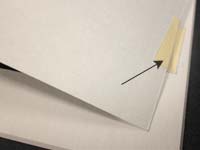 |
| Tack cloth A cloth used for wiping that is treated with a tacky substance intended to better remove dust and particles that might marr a surface prior to painting or framing. |
| Tacking iron A handheld tool used to activate heat-sensitive adhesives in small sections. The pointed tip can easily press into corners. Used in collaging, quilting, photography and more. |
| Tapered Floaters A type of canvas floater frame that features a drop edge is wider at the face than at the lip due to a gradual taper. As a result, the additional 1/4" usually added to each dimension to allow the canvas to "float" in the frame is unnecessary, as a canvas set against the wide base will be automatically separated from the face. |
 |
Tapped angles A piece of metal hardware used for constructing metal frames. Also called a "corner", it is an L-shaped piece of flat metal with a screw in each end. Once it is inserted into the track at the back of the frame leg with the untapped angle below it, the screws are "tightened" to press away from the bottom piece and hold the frame corners together.
Order online: Tapped Corners |
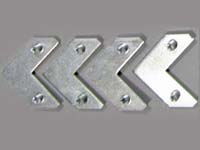 |
Teak wood Teak is a dense hardwood that is known for its ability to withstand the elements, and for the beautiful furniture that is often made from it. Highly durable and water resistant, Teak is generally golden or dark brown in color with a coarse texture.
The wood is easily workable in all areas, though silica in the body of the tree has been known to dull blades. Considered the best wood for rot resistance, Teak is a good choice for archival picture framing. |
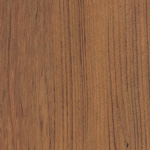 |
| Techmount A company that produces a heat-activated adhesive tissue used in dry mounting processes. The tissue is placed between the mounting surface and the image, and pressed with a heated iron or lidded press. The tissue adheres the artwork to the mounting board. |
Thick Gallery Wrap Any stretched canvas that has been wrapped around a stretcher bar frame that is 1 1/2" deep. The depth translates to the distance the viewed portion of the canvas will extend from the wall (the width of the drop edge).
Order your thick gallery wrapped canvas print using our easy online ordering process.
Or order 1-1/2 inch Stretcher Bars, unassembled |
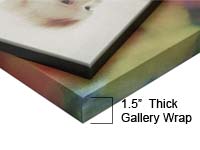 |
Thin Gallery Wrap Any stretched canvas that has been wrapped around a stretcher bar frame that is 3/4" deep. The depth translates to the distance the viewed portion of the canvas will extend from the wall (the width of the drop edge).
Order your thin gallery wrapped canvas print using our easy online ordering process.
Or order 3/4 inch Stretcher Bars, unassembled |
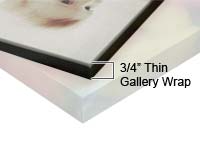 |
| Tint A tint is a color created when a solid color is mixed with white, creating a lighter version of the color. In contrast, a "shade" is a color mixed with black to create a darker version of the color. In printing and color reproduction, a tint refers to a variation of a base color achieved by adding white or another lightening agent to lighten or dilute the color's intensity. Tints are commonly used to create subtle variations in color, achieve pastel shades, or adjust the brightness and saturation of colors in printed materials. Tints play a vital role in color matching, color correction, and color harmony in graphic design, illustration, and printing. |
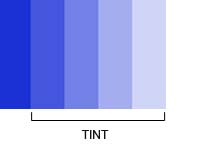 |
| Tone Tone refers to the degree of lightness or darkness of a color, often described in terms of its brightness or value. In visual arts, tone is an essential aspect of color theory and perception, influencing the overall mood, contrast, and visual impact of an image or artwork. Tones range from light to dark along a grayscale or tonal scale, with lighter tones containing more white or lightness and darker tones containing more black or darkness. Adjusting tone can alter the perceived depth, form, and spatial relationships within an image, affecting its composition and emotional resonance. |
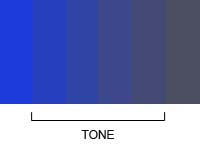 |
| Tooth Used to describe the grain of the artistic papers. It refers to the roughness of the paper - the depressions between the fibers - created by the machine during processing. |
| Touch-up supplies Substances or materials used by the framer to repair damage or imperfections in, or alter the appearance of, a picture frame. They can include waxes, wood markers, color additives, gold leaf paint, nail hole filler or gilt cream. |
| Triple mat A picture frame display that has three overlapping mats between the glass and the image. Often, there will be a 1/4" reveal on the middle mat, and a 1/8" reveal on the bottom mat (this may be doubled in the case of a large artwork, as it is reliant on ratio). It is important to note that the rabbet of the frame (the cut out area behind the lip) must be deep enough to hold the glass, artwork, backing and three mat boards. |
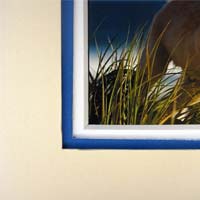 |
| Tru Vue glass Tru Vue is a company that produces glass and acrylic cover products that are manufactured and treated to minimize the green or orange tint, and the interfering reflection, that regular glass often gives to the artwork it covers. They also offer non-glare and anti-static versions. |
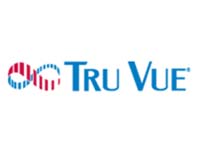 |
Turn buttons A tab with a screw hole on one end that is used to hold the artwork contents within the frame. The button is screwed into the back of the frame, close to the inner edge. The tab extends across the rabbet, keeping the backing in place. If not overtightened, the turn button can be moved off the backing, allowing the owner to easily change out the art.
Order online: Turn Buttons |
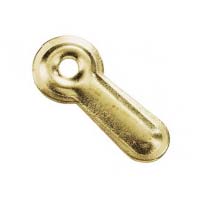 |
TYVEK Made from polyethylene (a petroleum-based plastic) fibers flashspun to produce an unwoven, synthetic material, Tyvek (the brand name from the company DuPont) is most often used to protect building foundations before the siding has been put up. The material is strong and difficult to tear (but easily cut), and repels liquid water.
In printing, this substrate can be used much like regular paper, though it must be properly treated for any ink applications besides lithographic and flexographic. Solvent inks with too high a solvent concentration can cause the material to swell, and water-based inks may cause the image to feather or blur. Tyvek is commonly used for printing ski tags, banners, tags, and labels. |

